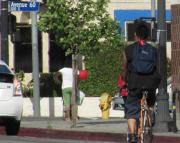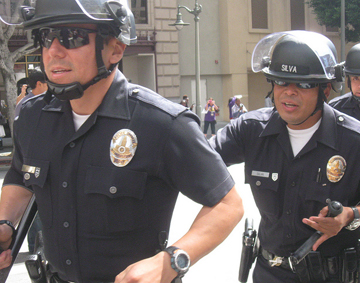L.A. cyclists, drivers and pedestrians are reacting to the L.A. City Council’s MyFigueroa project, an initiative to create more bike lanes, cycle tracks and pedestrian walkways on Figueroa Street from Exposition Park through Downtown L.A.
“If you’re adding more bike lanes … You’re just going to increase the congestion,” said Christina Ramsey, an L.A. native who drives on Figueroa every day.
“I can potentially get somewhere faster for less money and breathe in fresh air while doing so,” said Asha Anderson, a college student who bikes near Adams Boulevard and in downtown L.A.
One in ten households in L.A. does not have a car, according to the L.A. County Bicycle Coalition. The group is pushing for city planners and politicians to change the way they look at transportation in the city as a whole.
Learn more in an audio story from Annenberg Radio News:










 Ten anti-Wall Street protesters were arrested downtown Thursday afternoon after entering a Bank of America. They were a small part of Re-fund California, a coalition that marched to protest bank policies. They were joined by demonstrators from Occupy LA, who’ve been camping outside City Hall since this weekend.
Ten anti-Wall Street protesters were arrested downtown Thursday afternoon after entering a Bank of America. They were a small part of Re-fund California, a coalition that marched to protest bank policies. They were joined by demonstrators from Occupy LA, who’ve been camping outside City Hall since this weekend. Photo courtesy of
Photo courtesy of 




